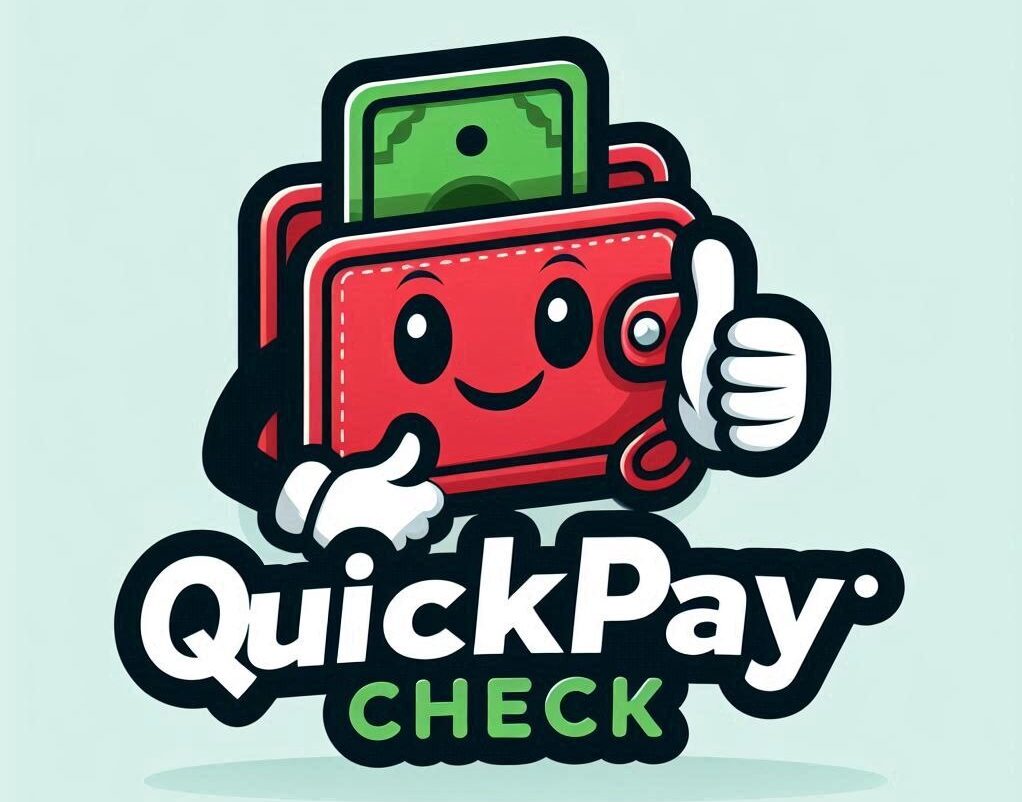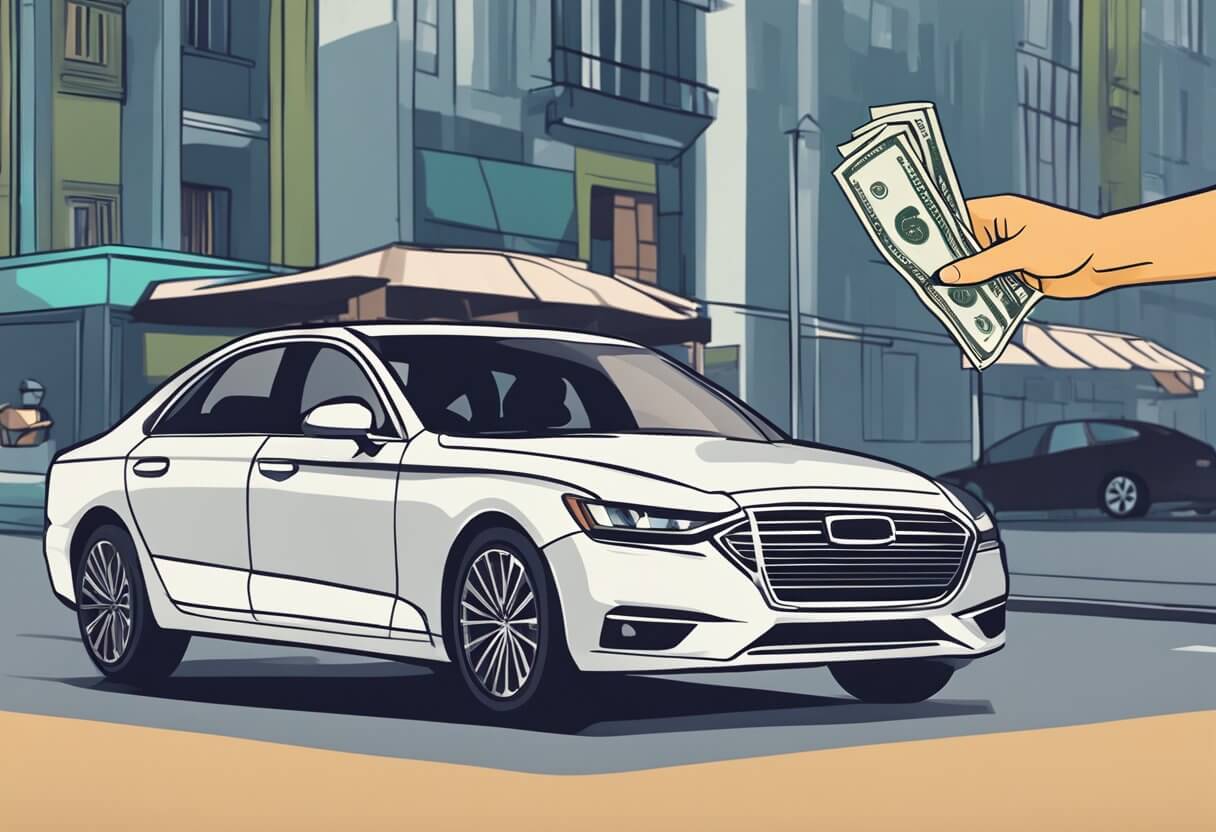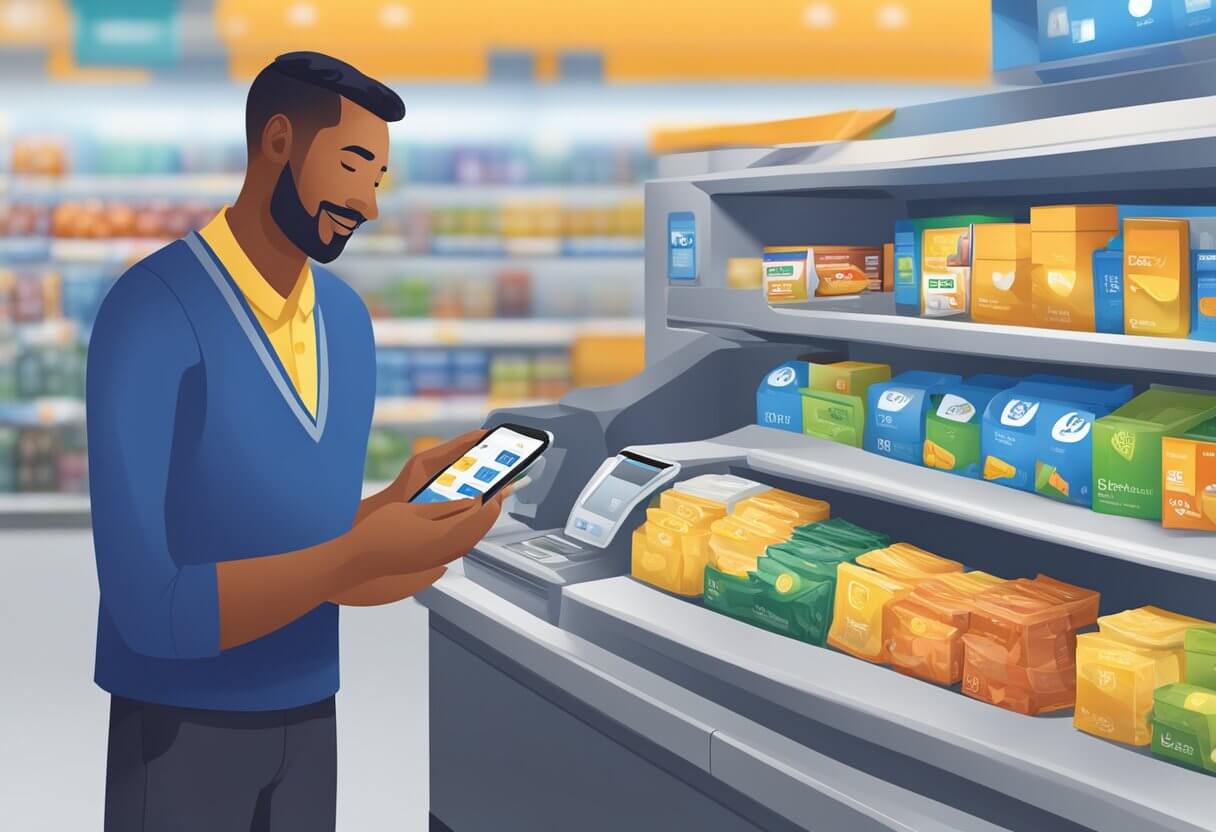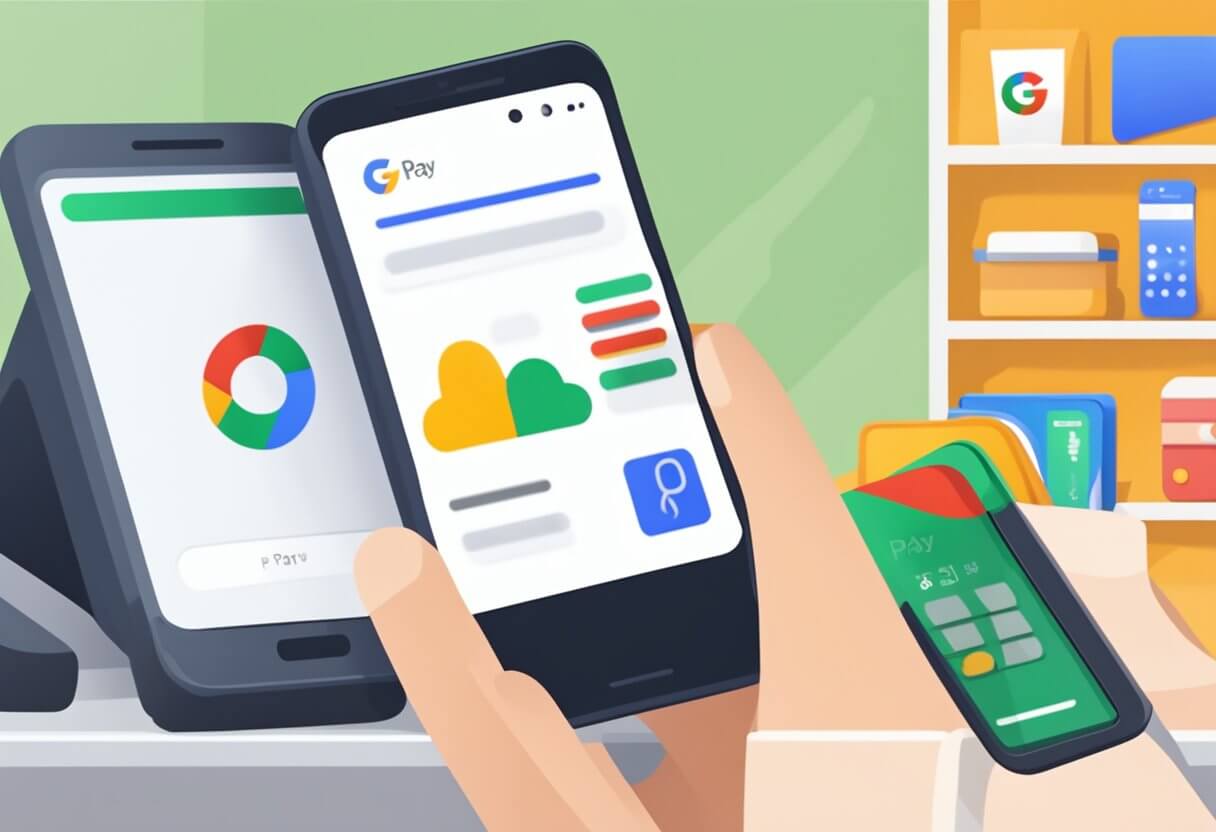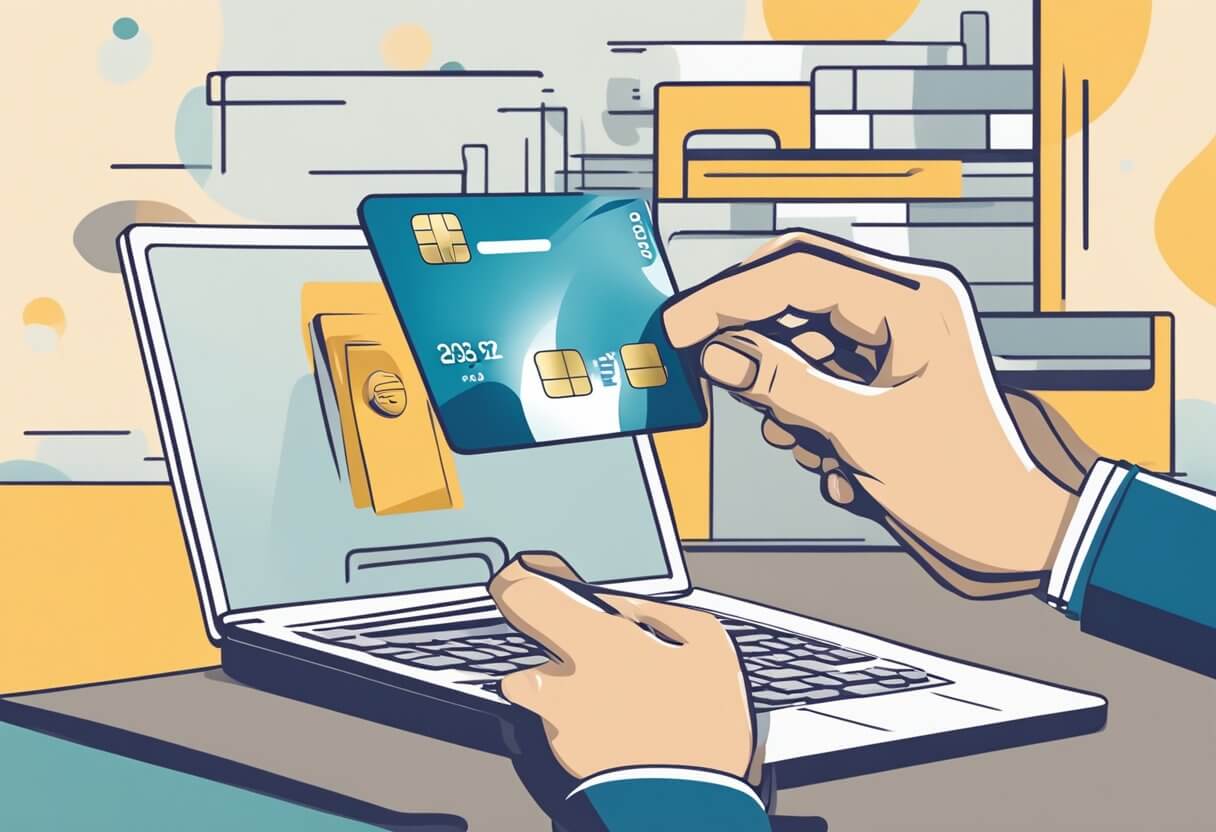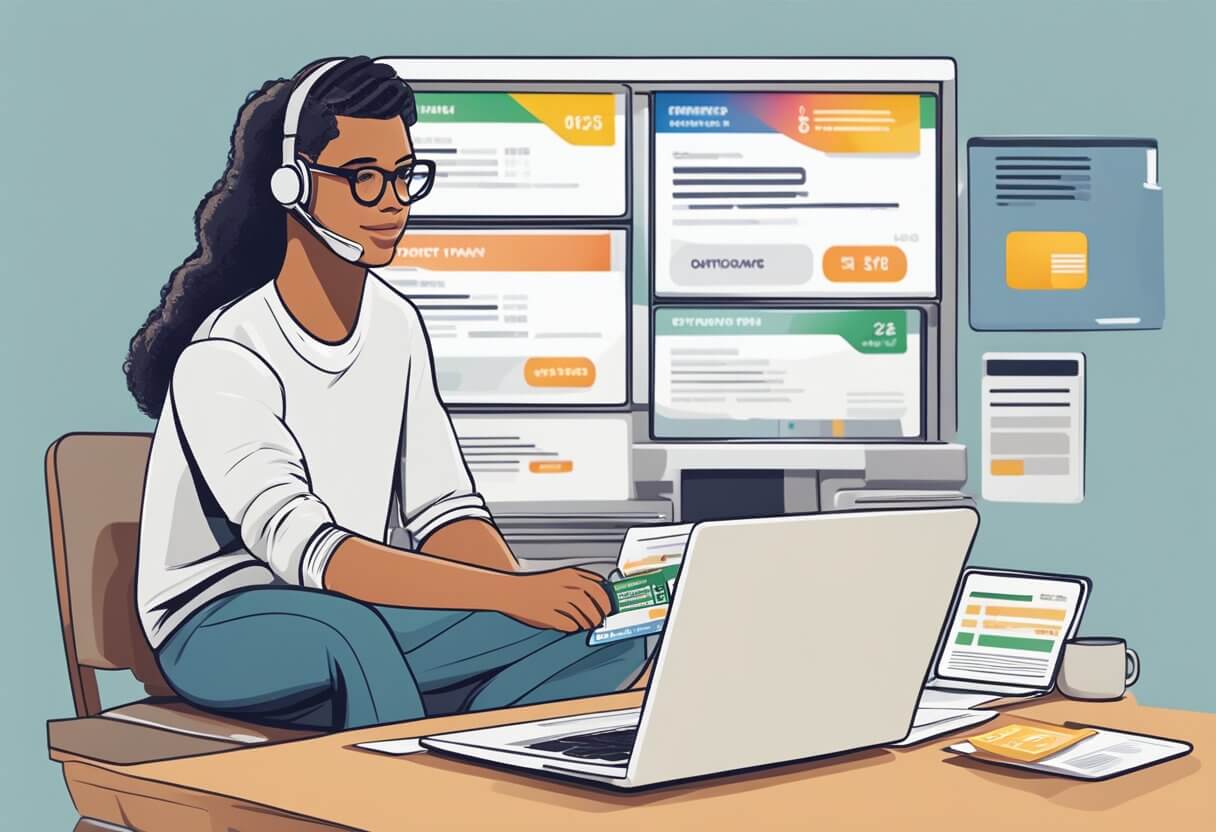Ridesharing services like Uber have become a popular and convenient transportation option in cities across the globe. With just a few taps on your smartphone, you can securely book and pay for rides without the need to handle cash.
But what if you prefer paying with physical currency or simply don’t have access to other digital payment methods? Can you pay for an Uber ride with cash?
The short answer is yes, Uber does accommodate cash payments – but there’s more you need to know. Whether you’re an Uber rider or driver, this guide will walk you through everything you need to understand about paying and receiving cash payments on the platform.
We’ll cover topics like:
- How cash payments on Uber first got started
- Exactly how to request an Uber ride and pay your driver in cash
- Potential issues to be aware of when paying in cash
- How cash payments differ from Uber Cash balances
- Whether paying cash nets drivers bigger payouts
- Safety and security considerations with cash transactions
- Full availability details across countries and cities
- Cash payment options for Uber Eats food deliveries
- And much more…let’s get started!
A Brief History of Cash Payments on the Uber Platform
It may surprise some riders to discover that Uber has actually accepted cash payments in select areas around the world since 2015.
Uber first rolled out a cash payment pilot program in Hyderabad, India that year. The rationale was to accommodate riders in the region who preferred paying with cash over cards or didn’t have access to more digital means.
The cash payment feature proved successful in India and was later expanded to other markets with high cash dependency in 2016 and 2017. Today, paying with cash is possible in over 51 countries globally.
Most locations that support cash payments for Uber tend to be in Latin America, Africa, Asia, the Middle East, and occasionally certain cities in Europe.
However, Uber cash payments are not widely available in the United States, Canada, UK, and some other predominantly card-based markets. But the options continues to expand over time in line with rider demand.
Checking If Cash Payments Are Supported in Your Area
Because availability varies so much city to city, your first step is verifying if cash is even an option for Uber rides in your location.
The quickest way to check is by opening your Uber app and navigating to the payment section:
- Open your Uber app and tap the menu icon in the top left corner
- Choose ‘Wallets’ or ‘Payment’ depending on your app version
- Scroll down and look for the ‘Cash’ payment method option
If cash does not show as an option, then unfortunately it is not supported in your region currently.
But if you do see Cash there alongside options like credit/debit cards and PayPal, that confirms paying in cash is enabled.
You can select Cash as the default payment method for all rides or on a per-trip basis (more on that later).
Now let’s walk through exactly how to request and pay for an Uber ride with cash step-by-step.
Step-By-Step Guide to Paying Cash for an Uber Ride

Paying cash for an Uber works very similarly to other payment methods with just a couple additional things to be aware of:
1. Enable Cash as Your Default or Per-Ride Payment Method
First things first – before you can pay in cash you need to enable it as an option. As shown above, navigate to the payment menu and tap to select ‘Cash’.
You’ll then have the option to set it as the default payment method for all rides or choose it on a per-trip basis later.
If cash is not your everyday preference, I suggest leaving a card as the default option but still adding cash as a secondary choice.
2. Request Your Ride as Normal
Once cash is set up as an option, go ahead and request a ride like normal by entering your destination and selecting a vehicle preference if available.
You don’t have to indicate you intend on paying cash when booking – that part comes later.
3. Wait for Driver Acceptance and Arrival
Give your driver a few minutes to make their way to the designated pickup location. You can watch them approach in real-time on the map.
If you happen to have cash selected as the default payment method, the driver’s app indicates to expect a cash trip with a cash icon on their end.
But even if you plan to pay cash for just that ride on an ad hoc basis, it’s still a smooth process.
4. Confirm Cash Payment Method In-App
This step is crucial or else the app will expect a card payment!
Right before getting into the vehicle, double check that ‘Cash’ is selected as the payment method for that trip. You should get a confirmation indicating cash was successfully activated.
If you don’t complete this until after the ride starts, unfortunately it’s too late to change it to cash.
5. Pay Your Driver Cash at Drop Off
Alright, you’ve arrived at your destination! To wrap things up, simply hand your cash payment directly to the driver as you exit the vehicle.
It’s wise to prepare exact change in advance whenever possible in case the driver cannot make change for larger bills on the spot. We’ll get into tips for smooth transactions next.
And that’s it – by taking those steps you’ve now completed an Uber ride entirely by cash payment!
Not so hard right? Now let’s go over some best practices to ensure seamless cash trips.
Tips for Seamless Uber Cash Transactions

Paying with cash for Uber rides comes with a few additional things to consider compared to the ease and convenience of credit/debit card or PayPal payments.
Here are tips from real Uber drivers and riders on making sure your cash experience goes smoothly:
Bring Exact Cash or Smaller Bills
Carrying smaller denominations prepares you for every scenario rather than burdening the driver to make change. Quarters and singles are ideal so you can match the fare amount perfectly.
Uber advises riders to have extra cash on hand anyway to cover unexpected tolls or other incidentals that may come up mid-route.
Having that buffer means never landing short of the final amount due.
Discuss Change Needs Upfront
If paying with a larger bill can’t be avoided, ask the driver early on in the ride if they can break the amount you have. That gives time to stop at a store for change if necessary.
Never assume drivers will have adequate change for $50 or $100 bills. Discuss this in advance – even before they pick you up if possible.
Add Driver’s Number for Extra Assurance
Exchanging contact info removes uncertainty for both parties. If your cash doesn’t exactly line up with the fare at drop-off, you’ll have the means to resolve any discrepancy.
Having their number also gives you a lifeline if your cash payments ever go missing between destinations or other unforeseen issues.
Carry Extra Cash for Incidentals
Uber often runs promotions that will be discounted from the final fare price automatically when using cards or Uber Cash.
But with cash payments drivers have no way to adjust down the fare you originally agreed to pay.
So always carry some additional cash padding or be willing to forfeit any discounts or promos you had entered. There is no work around for this quirk with cash rides currently.
Tip Your Driver – It Makes Their Day!
A nice tip on top of the fare – whether a couple bucks or more – still goes very far in brightening an Uber driver’s day.
Knowing they provided good service warrants that extra cash gratuity makes all difference, since base fares alone are often meager.
So there you have it – those are the best tips for making sure your cash-based Uber rides go off without a hitch!
How Cash Payments Differ From Uber Cash Balances?
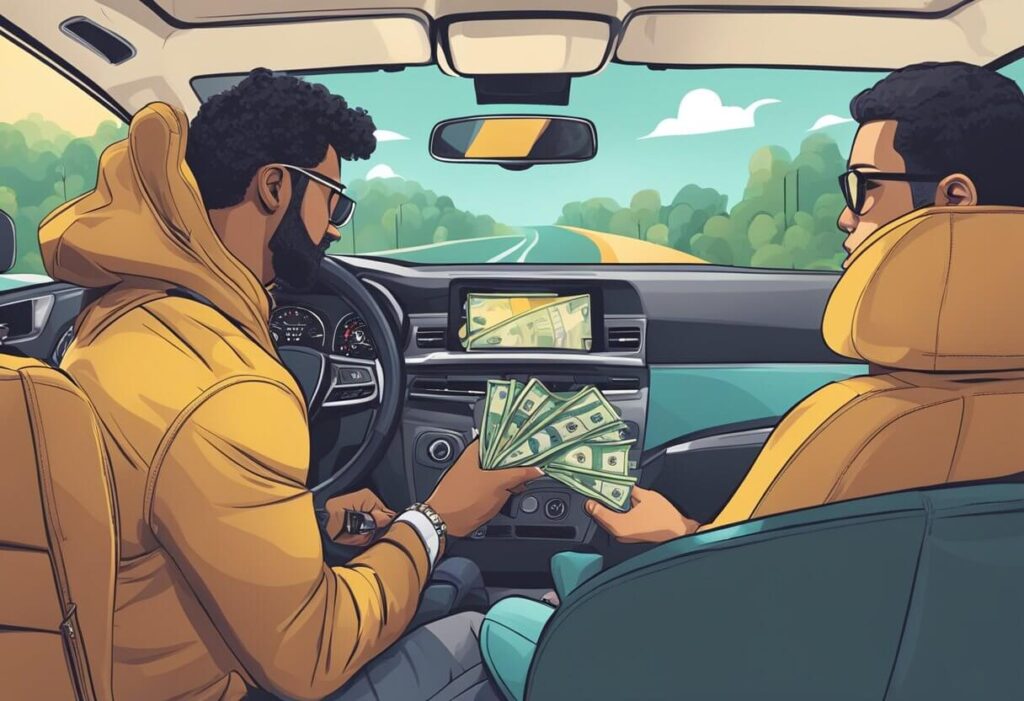
A common confusion for many riders new to paying with cash on the platform is mistaking it for what’s called Uber Cash.
Despite what it’s named, Uber Cash has nothing to do with actual cash or paper currency at all. The terminology for their prepaid account system is certainly misleading!
Here are the key differences riders should understand:
Cash Payments
- Refers to physical paper bills and coins
- Driver collects cash directly from you at end of ride
- Supported in 51 countries but not available everywhere
Uber Cash
- Digital balance you preload like a gift card
- Used automatically to deduct trip charges
- Available globally no matter how you want to pay
So in summary:
- Real cash payments involve directly handing drivers currency
- Uber Cash is prepurchased credits stored in your app
Hopefully that clears up why the names seem to imply similar things when in reality they work quite differently!
Do Uber Drivers Make More Money From Cash Trips?
For drivers, getting paid cash-in-hand at the end of rides seems like it should net more take home profit.
Unfortunately though, Uber‘s commission and service fees still come out of driver balances even on cash trips. There is no way around these deductions currently.
Here is exactly what happens:
- Driver takes rider to destination paid in cash
- Trip completes with full cash payment collected
- Uber sees cash trip data and deducts their standard fees
- Driver sees total cash payment deposited into their account minus Uber’s cut
So drivers don’t directly profit any extra from cash payments themselves. The cash essentially proxies as a instant deposit enabling Uber to withdraw later during payroll.
Over the long run earnings are neutral – the cash just offers convenience of getting paid quicker rather than waiting on digital tips or fare payments to clear.
For now cash payments should be looked at as helpful extra functionality for riders rather than a way for drivers to avoid commissions.
Perhaps Uber will update the cash disbursement system at some point to further benefit drivers, but no public plans just yet.
Are Cash Payments Risky Compared to Credit/Debit Cards?
Understandably some riders feel wary about carrying significant cash around which could be lost or stolen. So how do risks compare to digital payment platforms?
The fact is cash does intrinsically come with vulnerabilities credit cards and PayPal do not:
Lost Cash Cannot Be Recovered
Misplacing paper currency offers no recourse for tracking it down. Once gone, any stolen or dropped cash is likely gone permanently.
However losing your physical card or having card data compromised conversely allows you to call your provider to freeze funds. You also gain benefit from zero liability policies many issuers have.
Lacking Records Makes Disputes Trickier
Digital payments retain rich transaction records both on your statements and in the app allowing seamless filing of disputes when issues arise.
But using cash forfeits that paper trail since no documented proof exists without requesting receipts during each encounter. Memory can bias discrepancies.
Carrying Significant Sums Raises Robbery Risks
Flaunting large amounts of cash money can make riders targets if desperate criminals happen to spot funds in transit around destinations.
In contrast, keeping spending entirely on mobile or cards minimizes this general public safety risk. Apps shield account balances from broadcasting dollar amounts.
So there are certainly tradeoffs depending on your personal preferences, tendencies, and risk tolerance. Just be fully informed before deciding to use cash over other modes.
Best Practices for Staying Secure With Cash Payments
However, riders can take reasonable precautions to minimize cash payment risks just like guarding any other valuable:
- Only withdraw enough needed cash right beforehand rather than carrying your life savings around
- Split funds across multiple locations on your person rather than one wallet
- Be discreet when counting or handling money publicly
- Log your driver’s license plate and photo via app for identifiability
- Enable rideshare tracking and share status with trusted contacts
- Trust your intuition – if a situation feels unsafe, end the ride early or don’t ride at all
Practicing situational awareness and applying street smarts helps considerably too. Don’t flaunt sources of cash openly.
Many riders combine cash payments with carrying minimal amounts topped up with PayPal or cards only when depleted. This balances security with liquid cash availability.
So weight factors accordingly – cash certainly has a place within a multilayered payments strategy.
Where Can You Pay Cash for Uber Rides Globally?
We already touched on cash payments being available in over 50 countries, but what about specifics?
Unfortunately Uber does not publish an official public list of all cash payment cities. Support is indicated only in the local app based on enabling the feature.
But generally speaking most global metros across Latin America, Africa, Southeast Asia, India, and the Middle East likely accommodate cash payments currently. More limited options exist deeper in Europe and Asia.
Again though, preemptively choosing cash when booking is the only way to confirm your location definitely supports it.
If cash doesn’t show and save properly as an option under your payment menu, unfortunately your area still doesn’t officially offer that functionality yet.
You can check uber official guide here: https://www.uber.com/en-AE/blog/uber-payments/
Skipping uber cash cities reference since file could not be located.
In the United States, cash support is extremely minimal except occasionally in certain neighborhoods of New York City.
Hopefully as more riders globally request cash payment abilities, Uber continues expanding its reach. But be sure to check on a granular level rather than assuming.
Can You Pay Cash For Uber Eats Deliveries?
Ordering takeout through Uber Eats offers similar conveniences to ridesharing for food delivery. So what about paying those delivery drivers in cash – is that supported?
Uber Eats began rolling out cash payment functionality back in 2017, starting in India. This later expanded to parts of Latin America and Africa.
The process works just like ridesharing – simply choose cash as the payment method before finalizing your food order. The delivery driver is notified to expect cash payment upon handing you your food.
Unfortunately though in the United States, Canada, UK, and most other predominantly card-based regions, Uber Eats currently does not support cash payments. Only electronic payments are enabled there.
So availability works much like ridesharing in that cash is limited globally except some developing economic regions.
But feel free to check your app’s payment settings to see if your area supports it for food orders. Global expansion may continue over time if local customer demand merits it.
For now, carrying a little cash for the tip is still appreciated by drivers. So even when you pay digitally for the meal, spare a couple dollars cash gratuity!
Does Lyft Allow Cash Payments?
Uber’s chief rideshare rival Lyft operates nearly identically in most aspects except lacking cash payment support.
Lyft has given no indications thus far of ever allowing cash transactions. The only included payment methods are debit/credit cards and prepaid Lyft Cash balances.
So if you prefer paying or tipping your drivers in cash, unfortunately Lyft is likely never going to accommodate that.
For now Uber leads as the only major rideshare platform enabling cash payments in select supported regions.
Frequently Asked Questions About Uber and Cash
Let’s wrap up by addressing some common questions riders and drivers may still have:
What’s the maximum cash amount drivers are expected to break for change?
Uber policy expects drivers to break a $20 bill at minimum, but change for $50 or $100 is quite unreasonable to expect. Always pay with smaller bills.
Can drivers rate poorly if riders don’t have exact change?
Retaliatory ratings for cash shortcomings could see drivers deactivated. But bring exact amounts or tip generously if requiring breaks.
Do tolls, surge pricing, or promotions still apply when paying cash?
Yes, unfortunately everything but the base fare is still charged after the fact through deductions from driver earning payments.
What if cash is missing post-trip or trip was never started?
Contact Uber support immediately in any case of missing funds or trips initiated but never taken. They investigate fraud or theft.
Is tipping still expected on cash trips since no app option?
Absolutely! In fact cash tips are still greatly appreciated by drivers despite Uber’s cash trip concessions.
Can Uber drivers reject cash trips without facing penalties?
Drivers cannot discriminate against cash trips without risking sanctions. They must take all matchings the app issues.
How does paying cash for Uber help drivers in any way?
It mainly assists riders rather than benefiting drivers monetarily. Cash payouts ultimately just proxy for digital disbursements minus Uber’s cut. Convenience is the main plus.
Are there rideshare services besides Uber that accept cash payments?
Very few. Regional competitor apps sometimes enable cash. But mainstream choices like Lyft have no known cash payment options currently or planned in their roadmaps.
The Final Takeaway: Cash Still Has Its Place, But Consider The Tradeoffs
As we’ve explored extensively, paying and accepting cash for Uber rides certainly has its niche place in the world – albeit a declining one.
Tech-savvy riders in wealthy nations may scoff at the notion of using antiquated paper currency when app-based payments work flawlessly. But for billions globally, cash remains lifeblood enabling participation in modern economic activities where systemic barriers still persist.
Uber‘s cash payment feature brings those without bank accounts or cards into the fold of mobility innovation they may have otherwise been left out of. Drivers too in remote regions rely on liquidity that cash provides to earn income from transporting passengers.
Yet cash comes with inherent frictions and risks that adopters should carefully weigh against potential upsides. Handling physical money intrinsically opens vulnerability to theft, fraud, sanitation issues, and accounting errors that digital payments avoid. Riders must gauge if rewards outweigh the threats fittingly to align with personal preferences.
As the world marches steadily toward cashless societies, there is no certainty how much longer Uber will stand behind accommodating currency. For now expansion continues but ultimately consumer demand determines its longevity.
Cash or credit – evaluate your needs to decide the appropriate tool for any job. But recognize Uber provides options depending where your life leaves you across that spectrum of financial progress.
